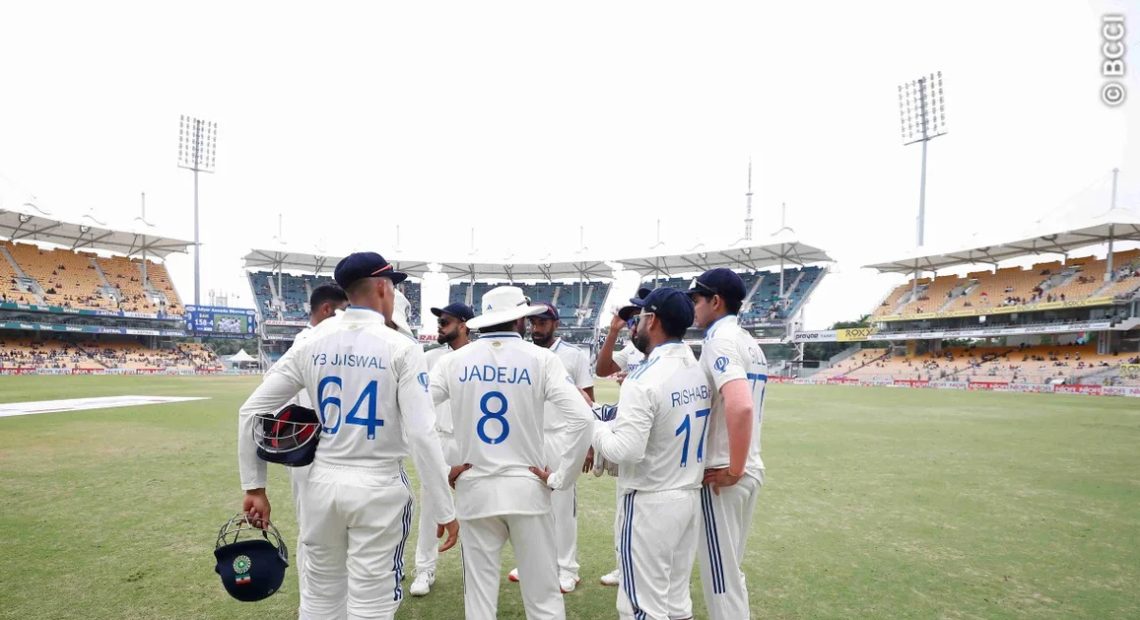
India’s Test Woes: When Will We Learn to Separate Formats?
Watching India in the ongoing Border-Gavaskar Trophy feels like attending a stand-up comedy show—except no one’s laughing by the end. The performances have been subpar, the decision-making laughable, and the team management?
Well, let’s just say they’re taking the “test” in Test cricket a bit too literally. Here’s a dissection of what’s gone wrong and why it’s high time we hit the “reset” button.
Rohit Sharma: The Captain Who Needs an Exit Strategy
Rohit Sharma, India’s batting stalwart and current Test captain, seems to have hit a wall in the longer format. While his contributions to Indian cricket cannot be understated, his recent performances suggest that the “Hitman” moniker no longer applies to his Test game. Rohit’s batting has been pedestrian, and his fitness levels are far from international standards, making it hard for him to lead from the front. Watching him struggle in the field is reminiscent of a player long past their prime—a harsh but accurate assessment.
His captaincy, too, has been underwhelming. From questionable field placements to uninspired decision-making, Rohit has often appeared reactive rather than proactive. Leadership in Test cricket requires a calm yet assertive head, something that Jasprit Bumrah has exhibited in spades. Bumrah’s brief stint as captain during the England tour showcased his ability to handle pressure, make bold decisions, and inspire his teammates—traits Rohit seems to have lost.
It’s time for Rohit to do what’s best for the team: step aside gracefully. Passing the baton to Bumrah would not only rejuvenate the side but also allow Rohit to focus on formats where he still excels. Retirement isn’t the end; it’s a new beginning—perhaps with a role mentoring the next generation of Indian cricketers.
Virat Kohli: The Last Flicker of a Dying Flame?
Virat Kohli’s place in Indian cricket folklore is undisputed. The man who carried the team on his shoulders for over a decade now finds himself at a crossroads. His recent outings in Test cricket, while peppered with glimpses of his former brilliance, lack the consistency that made him a global icon. The fiery intensity that once defined him now feels like embers of a dying flame.
But Kohli isn’t entirely done—yet. His fitness, discipline, and experience still make him a valuable asset. He deserves one more series to prove his worth, not just for his legacy but for the team. A series where he can bat freely without any burden, focusing solely on his game. However, if the runs don’t come, it’s time for him to take a hard look in the mirror and consider stepping aside.
Great players know when to exit the stage, and Kohli should be no different. His departure, if it comes, must be on his own terms, with his head held high. Until then, let’s give him the chance he has earned—one final opportunity to remind us why we fell in love with his batting in the first place.
Rishabh Pant: Reckless and Restless
Rishabh Pant’s return to the Test side after his accident was a story of grit and determination, but his performances have been a mixed bag. While his talent is undeniable, his approach to batting remains reckless. Watching Pant throw his wicket away time and again is as frustrating as watching someone solve a Rubik’s Cube with blindfolds. He has the skills but lacks the discipline to adapt to the demands of Test cricket.
Pant’s batting often disregards the match situation, and his obsession with aggression has cost the team crucial moments. His natural flair is a double-edged sword; while it has won matches, it has also handed the opposition opportunities. It’s evident that Pant needs a reality check. Sending him back to domestic cricket for a dozen games could be the reboot he desperately needs. Facing a variety of conditions and bowling attacks will teach him the value of patience and situational awareness.
Pant’s wicketkeeping has been solid, but Test cricket demands more than flashy stumpings. It requires a dependable batsman who can grind it out when the chips are down. If he can balance his natural aggression with situational batting, Pant could still be the Test match-winner India needs.
Shubman Gill: A Diamond in the Rough
Shubman Gill is often hailed as India’s next batting superstar, but his performances in the Test arena have been wildly inconsistent. While his cover drives and backfoot punches are poetry in motion, his technique often gets exposed against quality bowling. Gill’s inconsistency isn’t just a bad patch—it’s a pattern that needs urgent addressing.
The problem lies in his inability to adapt. In Tests, a batsman’s technique and temperament are tested over long periods, and Gill’s flashy strokes often lead to his downfall. His footwork is sometimes hesitant, and his shot selection questionable, especially against the moving ball. These are issues that cannot be fixed at the international level.
Domestic cricket is the perfect playground for Gill to iron out his flaws. Facing seasoned bowlers on challenging pitches will force him to fine-tune his technique and build the mental fortitude required for Test cricket. Gill has the talent, no doubt, but raw talent needs polishing. A few seasons in the Ranji Trophy and India A tours will help him mature as a batsman. Once he returns, he could be the long-term solution to India’s top-order woes.
Ravindra Jadeja: A Warrior Past His Prime
Ravindra Jadeja has been a cornerstone of India’s Test success for years, but even legends have an expiry date. His recent performances suggest that his best days are behind him. Jadeja’s bowling has lost its venom, his batting lacks the reliability it once had, and his fielding—while still top-notch—can’t compensate for his diminishing impact in other departments.
India needs to think about the future, and Washington Sundar offers a promising alternative. Sundar’s off-spin may not have Jadeja’s bite, but his control and ability to bowl long spells make him an asset. Moreover, his batting adds depth to the lineup, offering a genuine all-round option. Sundar’s performances in the few chances he has received suggest he’s ready for a longer rope.
It’s a tough call to sideline a player of Jadeja’s stature, but Test cricket is about current form, not past glory. Jadeja’s legacy as one of India’s finest all-rounders is secure, but it’s time to pass the baton. Sundar’s inclusion signals a new chapter for India’s lower order—a chapter that needs fresh energy and perspective.
Save the Pacers from IPL Fatigue
India’s pace battery is one of its strongest assets, but overexposure to T20 cricket is threatening their longevity. Mukesh Kumar, Harshit Rana, and Akash Deep are promising fast bowlers who could become mainstays of the Test side. However, the lure of IPL’s cash-rich league could reduce them to mere T20 specialists, robbing India of potential match-winners in Tests.
These young pacers need to be nurtured carefully. They should be given exclusive Test contracts, shielding them from the physical and mental toll of the T20 grind. Test cricket demands a different skill set—control, stamina, and the ability to outthink batsmen over long spells. Letting these bowlers focus solely on red-ball cricket will help them develop these attributes.
The BCCI must also schedule more India A tours to give them exposure to foreign conditions. Bowling with the Dukes ball in England or the Kookaburra in Australia will prepare them for the challenges of international cricket. Protecting these pacers from the IPL isn’t about denying them opportunities; it’s about preserving their potential for the format that truly tests a bowler’s mettle.
Coaching Chaos: Time to Get Serious
The current coaching setup, led by Gautam Gambhir, might work for the flashy world of T20s, but Test cricket demands a completely different skill set. Gambhir’s aggressive mindset, while effective in shorter formats, doesn’t translate well into the patience and planning required for Tests. The BCCI, being the richest cricket board in the world, can easily afford a separate coaching setup for Test cricket.
India needs a coach with a deep understanding of the format—someone like Rahul Dravid or VVS Laxman. These players epitomized the grit and technique needed for Test success and can instill the same values in the team. Supporting them with specialized coaches is equally important. A bowling coach like Venkatesh Prasad, Shaun Pollock, or Alan Donald can refine the pacers, while batting consultants like Andy or Grant Flower can teach the batsmen how to play in the “V.”
This isn’t just about hiring big names; it’s about creating a think-tank that prioritizes Test cricket. The current one-size-fits-all approach isn’t working. Test cricket deserves its own dedicated setup—one that can address the unique challenges of the format and prepare the team for long-term success.
BCCI: Protect the Purity of Test Cricket
The IPL has revolutionized Indian cricket, but its influence on the Test side is becoming a double-edged sword. Players are drawn to the glamour and money of T20s, often at the cost of their red-ball careers. The BCCI needs to step in and protect the sanctity of Test cricket.
One solution is to offer Test specialists higher contracts and better salaries. If money is the driving factor, let the BCCI outbid the IPL franchises. This would not only retain the players’ focus on Tests but also elevate the format’s prestige. Additionally, scheduling more India A tours and U23 tournaments will help identify and nurture talent for the Test side.
Test cricket is the ultimate format—it’s where legends are made. If the BCCI doesn’t act now, we risk losing the essence of the game. Protecting Test cricket isn’t just about saving a format; it’s about preserving the soul of cricket itself.


















